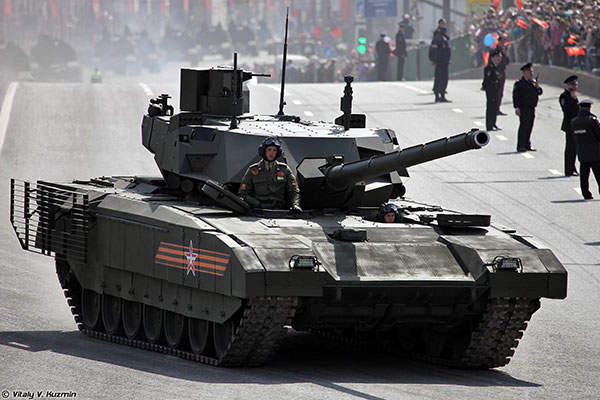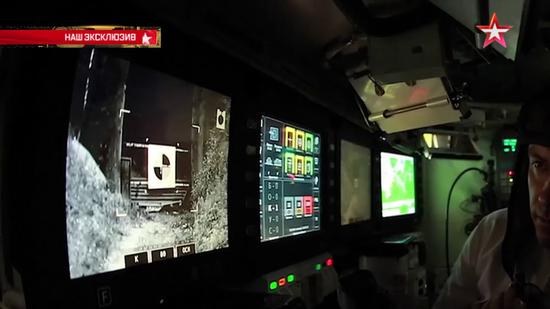(VIDEO) Russia Refuses to Deploy T-14 Armata in Ukraine Due to Being “Too Expensive”
(VIDEO) The Russian military is reportedly reluctant to deploy its newest and most advanced main battle tanks, the T-14 "Armata," in the conflict in Ukraine because it is deemed "too pricey," according to a close ally of Russian President Vladimir Putin.
(DEFENCE SECURITY ASIA) – The Russian military is reportedly reluctant to deploy its newest and most advanced main battle tanks, the T-14 “Armata,” in the conflict in Ukraine because it is deemed “too pricey,” according to a close ally of Russian President Vladimir Putin.
Rostec CEO Sergey Chemezov, in an interview with the state news agency RIA Novosti recently, stated that the T-14 “Armata” main battle tanks is excessively expensive, and it is highly likely that the Russian army will not use it at this time.
“The T-14 Armata is generally a bit expensive. In terms of its functionality, it is certainly superior to previous armored vehicles, but it is too costly, so they (the Russian military) will not use it at this time,” Chemezov said.
“It is easier for them (the Russian army) to purchase the T-90,” Chemezov added.
Moscow is said to have deployed a small group of T-14 Armata main battle tanks to the battlefield in Ukraine in July 2023 for a brief period before “withdrawing” them back to Russia.
Russia reportedly decided to “withdraw” its state-of-the-art tanks, the T-14 “Armata,” from the battlefield in Ukraine, citing the completion of various “tests” on the tanks.
According to the Russian national news agency TASS, the tanks were sent to Ukraine for testing, and after completing the tests, they were withdrawn from the battlefield.
“The purpose of deploying the T-14 Armata (in Ukraine) was to test and evaluate the performance of the combat vehicle in a real combat environment. The tanks has been withdrawn from the front lines,” the news agency reported.
Furthermore, the modern Russian main battle tanks were also deployed to Syria in 2020 to “gain experience and undergo tests in a real combat environment,” similar to their deployment in Ukraine.
A senior British military official stated that Russia’s newest main battle tanks is the “most advanced” compared to other tanks.
Chemezov stated that the Russian military needs greater financial resources to produce new tanks and weapons.

“At this time, we need money to create new main battle tanks, new weapons, and possibly cheaper ones. If there are opportunities to buy cheaper weapons, why not do so,” he said.
Initially, Russia aimed to produce around 2,300 units of the T-14 Armata main battle tanks by 2020, but due to various problems including strict economic sanctions against the country following its invasion of Ukraine, these efforts have been stalled.
So far, Russia is only capable of producing a limited number of these tanks.
Mass production of the advanced Russian tanks is expected to begin in 2025.
The T-14 Armata main battle tanks, developed by the Uralvagonzavod company, was unveiled to the public in 2015 during a parade in Red Square.
Uralvagonzavod, based in Nizhny Tagil, is the world’s largest manufacturer of tanks and has existed since the time of Josef Stalin’s leadership.
The T-14 main battle tanks intended for export to interested foreign customers have been intensively tested since 2019.
Uralvagonzavod was supposed to deliver approximately 80 Armata tanks to the Russian military by the end of 2022.

International defense analysts believe that the T-14 Armata main battle tanks, which resembles Western tanks, also incorporates materials and technology developed by Western companies, as do many other Russian weapons.
The T-14 Armata is said to “intimidate” the West because it features state-of-the-art technology, heavier and stronger armor, an unmanned turret with a 125mm cannon, digitized operations, and various other advantages.
The latest Russian main battle tanks, weighing 48 tons, is reportedly far superior to most mainstay tanks in Western countries.
According to reports in 2016, NATO commanders are concerned that the T-14 Armata main battle tanks could pose a threat to their tanks, especially in Eastern Europe and the Baltic states. — DSA



Comments are closed.